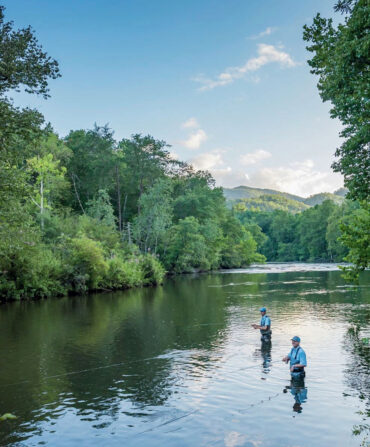“It’s scalloping water,” says captain Curt Romanowski of Florida Backwater Charters, piloting his twenty-five-foot Ranger bay boat across the glassy Gulf of Mexico. We’re just offshore from Pasco County along Florida’s Sports Coast. When we ease to a stop, the blur of blue-green water reveals meadows of waving sea grasses just below the surface, as far as the eye can see.

The Gulf is so still and smooth in these nearshore waters that it appears almost convex, like I’m looking down through a magnifying glass. The conditions are ideal for snorkeling with a view—and for foraging for lunch, too.
This is the habitat of the beloved bay scallop, a sweet-tasting bivalve that you can hand-harvest during snorkeling trips in the summer months along a stretch of Florida’s Gulf Coast. The expanse runs from Pasco County in the south (less than an hour away from my home in Tampa) all the way around the state’s Big Bend and as far west as Gulf County, in the Panhandle.
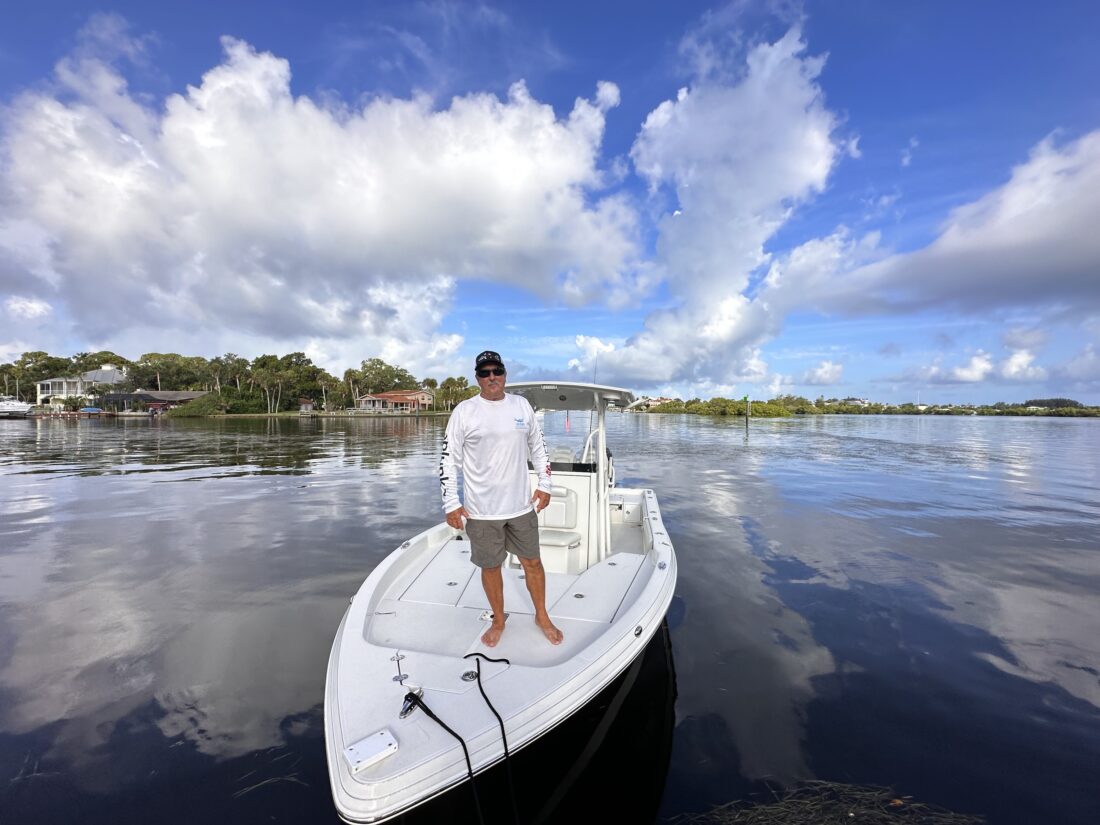
The recreational harvest of scallops is a quintessential Florida summertime activity for anyone with a boat, snorkeling gear, and an appetite. And since the state’s commercial fishery for scallops closed in 1994, if you want them, you’re going to have to dive in to get them (a Florida saltwater fishing license is required unless you head out with a licensed captain, like I did).
I’ve brought my kids, five and six years old, along for their first time scalloping, and they’re fighting me on the lifejackets and sunscreen as usual—but also just as keen as I am to snorkel in the bathtub warm water, which is clocking in at 88 degrees according to the boat’s electronics.

Romanowski, who grew up in Pasco County fishing these waters, instructs us to swim in a “grid-like” pattern, up one way and then back the other, to search for our meal. “Sometimes, when the tide is moving, all the grass will be pointing one way, so they could be hidden by the grass,” he says about the scallops. “They’re just sitting there waiting for their food to come by. Once you develop an eye for it, you’ll start picking them up.”
He tells us to grab the scallops from the back to avoid a potential pinch, and then hands us mesh bags for collecting our loot. We slide off the gunwales into water barely six feet deep.
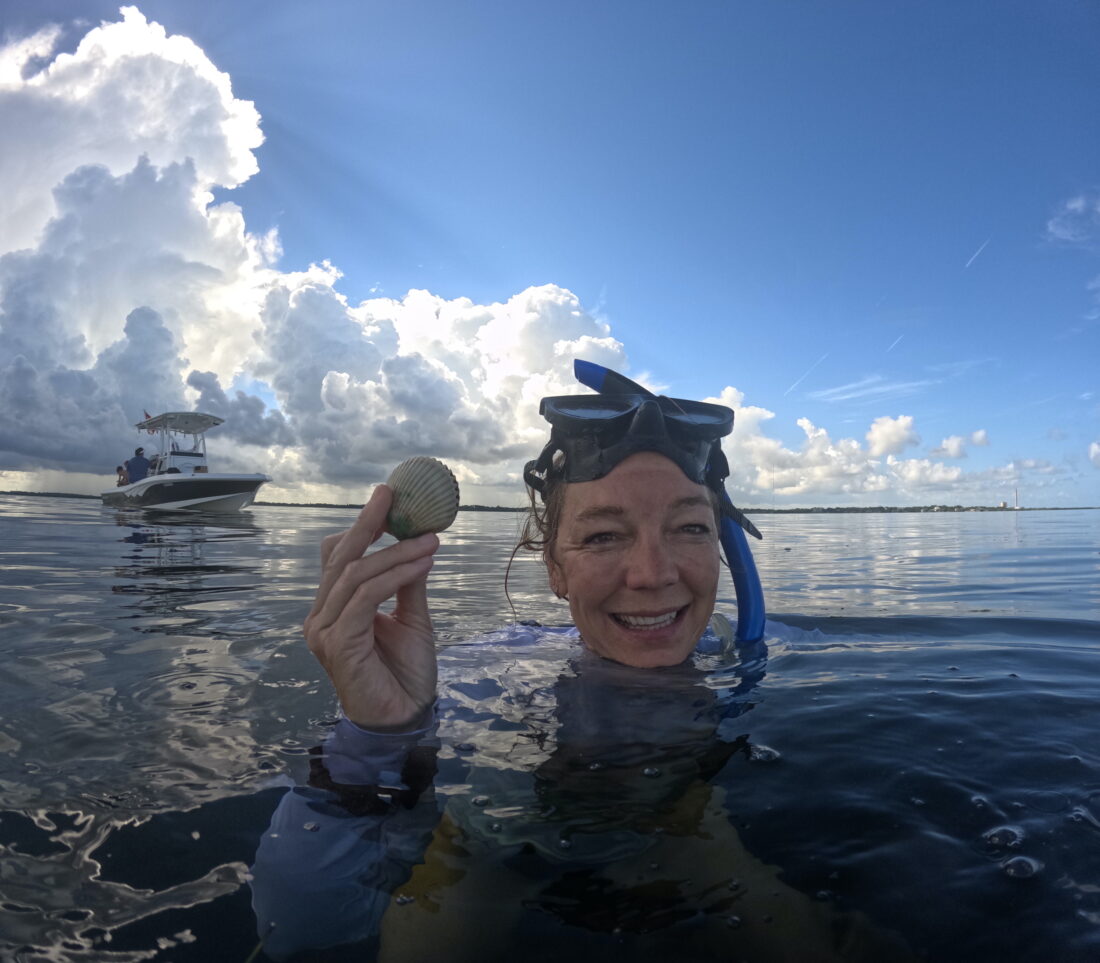
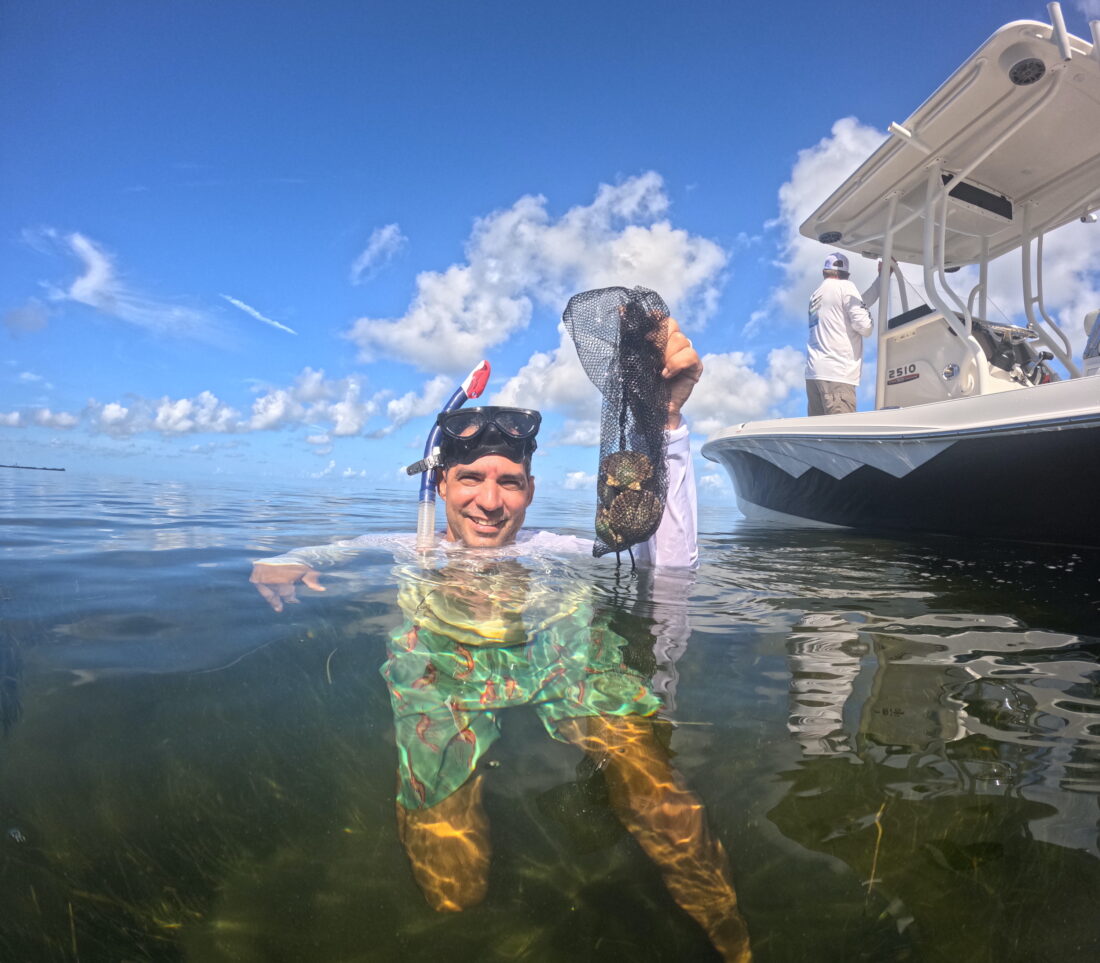
The view through my mask reminds me of Florida’s gorgeous freshwater springs—crystal clear, with each blade of sea grass shimmering as if illuminated from the inside by an LED light. Little schools of pinfish graze here and there.
The search for scallops is often likened to an underwater Easter egg hunt. But after a half-hour of searching, I decide it’s more like a treasure hunt. Each time I find a scallop—usually greenish brown with algae and perfectly blending into its surroundings—I yelp through my snorkel as if I’ve uncovered a golden coin. It’s that much of a thrill.
Bay scallops have roughly twenty pairs of iridescent blue eyes on their mantles, hugging the lip of their shells, that shimmer like tiny sapphires. They sometimes use their jet propulsion system to “snap” as you hold them, much to the delight of my kids.
But as feisty as they look, the species is vulnerable, says Maya Burke, assistant director of the Tampa Bay Estuary Program, one of twenty eight National Estuary Programs designated by Congress as “estuaries of national significance.” She told me after my trip, “Scallops need clear waters and abundant seagrasses in order to thrive. Juvenile scallops, or spat, attach to seagrass blades as they grow into adults.”
Unseasonably warm waters around Florida this summer could threaten the species. “Temperature changes play an important role not just for optimal seagrass condition,” Burke says, “but also for the timing of other ecological phenomena such as scallop spawning.”
“Scallops live in estuaries where oxygen and temperature are highly variable,” says Brad Seibel, a professor of marine science at the University of South Florida College of Marine Science. “As water temperature goes up, the amount of oxygen an animal needs increases. Warm water tends to have lower oxygen concentrations.” In that way, increasingly warm waters might prove to be a “double whammy” for bay scallops.
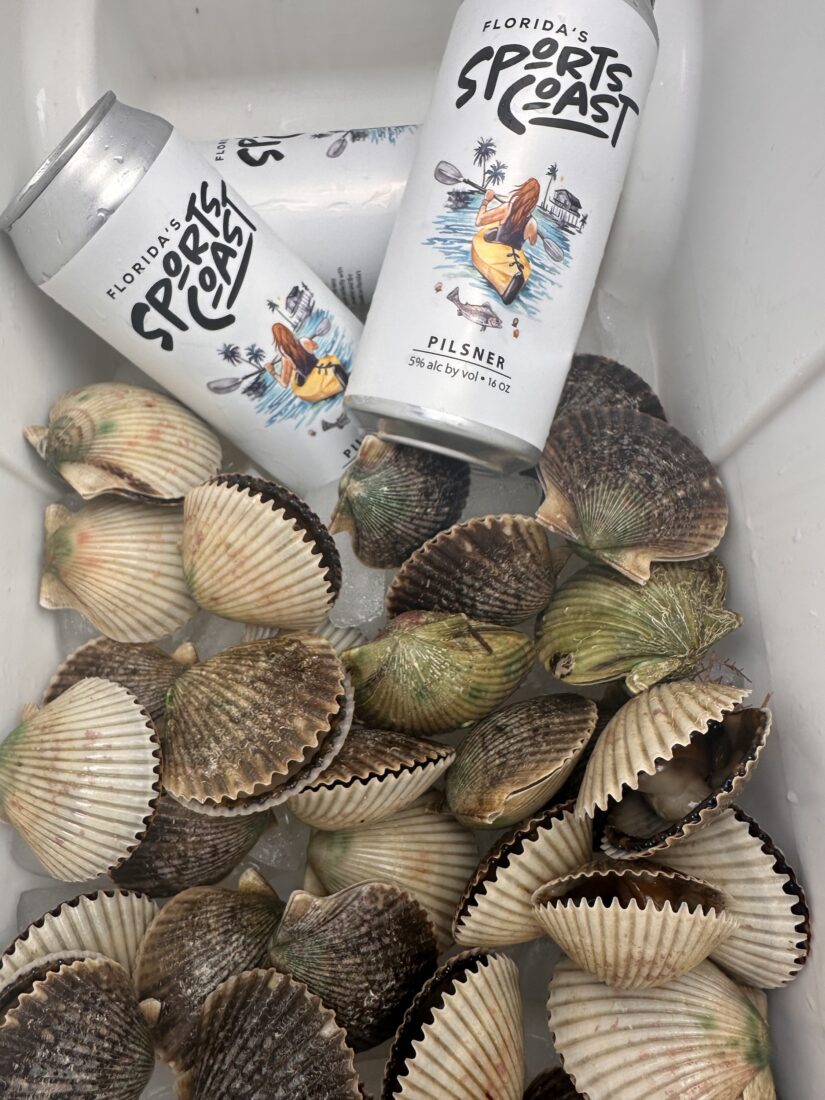
Luckily, their health in Florida’s waters is something scientists and the Florida Fish and Wildlife Conservation Commission are keeping an eye on. Scalloping only returned to Pasco County in 2018 after a twenty-four-year pause to protect declining scallop numbers. This year’s scallop season in Pasco County (July 1 through August 6) marks the longest one since scalloping was brought back to the county: thirty-seven days compared to the ten-day season of prior years. In some other counties, the season runs through September 24. (For up-to-date info on scalloping harvest zones, seasons, and limits, visit the Florida Fish and Wildlife Conservation Commission website.)
After a few hours of fun frolicking at the water’s surface (the joy is truly in the journey when it comes to scalloping), we climb back onto the boat to clean our catch, which is nowhere near the limit of two unshucked gallons per person (or one pint of bay scallop meat), but enough for an appetizer, at least, to share.
A spoon is all you need to clean the bivalves, which we’ve kept on ice in a cooler to open them up. Romanowski shows us how to loosen the scallop meat and mantle in one smooth scoop from one side of the shell, then push the remaining innards up and off, leaving only the jewel-like nub of white meat.
Back on shore, we enjoy them grilled up as an appetizer at Gill Dawg Tiki Bar & Grill in Port Richey, a waterfront spot we walk to from the dock. It offers a “Hook and Cook” special: You proffer the cleaned scallops, and they’ll prepare them—grilled, blackened, or fried—and serve them with two sides at picnic tables in the shade. (And a tall sweet tea or cold frosty beer is obligatory after a day in the Florida summer sun).

“Scalloping is really about enjoying time with family and friends, swimming around,” Romanowski says. “And if you find scallops, it’s a bonus.”
Romanowski prefers his scallops raw, straight from the shell. “I think they’re sweetest that way,” he says, and I agree—they’re as soft as butter and taste like pure fresh ocean, distilled. If you prefer to grill them, however, his favorite recipe is a cinch:
Grilled Florida bay scallops on the half-shell
1. Melt together some garlic and butter, and drizzle over scallops, opened and one shell removed.
2. Sprinkle each scallop with a pinch of Italian breadcrumbs and some freshly grated parmesan cheese.
3. Place the shell directly atop a grill grate and cook over medium-high heat for about three minutes, until bubbling.
4. Enjoy while warm, directly from the shell.



